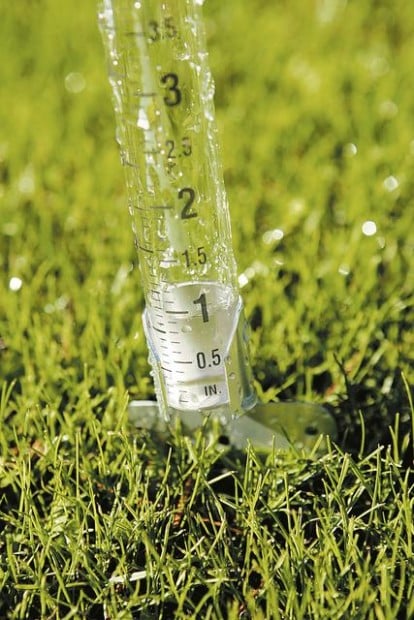How Long to Run Drip System in Arizona

It's time to scale back on the watering of gardens, lawns and landscapes.
Plants need significantly less water in the winter. So, if you haven't adjusted your watering schedule since summer, it's time to make the change.
Landscape plants are dormant in winter and require only enough moisture to keep them from dehydrating. In general, that means irrigating established trees and shrubs only once every 14 to 21 days. Citrus trees can be placed on the same watering schedule. Smaller ground-cover plants and perennial flowers should be watered a little more often — every 10 to 14 days. If rains occur during the week watering is scheduled, that irrigation cycle can be skipped.
Cactus planted in the landscape should not be watered during the winter. Watering cactus in cool weather can cause it to rot. Cactus growing in containers should be watered, but just enough to keep the soil from drying out completely.
Potted plants, other than cactus, growing outside on the patio should be watered often enough to keep the soil moist but not wet. Use a moisture meter to decide when and how often to water. Moisture meters are inexpensive and available at most garden and hardware stores. The meter should register in the moist range, halfway between wet and dry.
In the summer, most container-grown plants require daily watering, sometimes twice daily. But in cool weather, they can go several days between watering. Potted plants in large containers and in shade will need watering less frequently than smaller pots in full sun exposures. Allow the potting soil to dry slightly between watering. Container plants are especially susceptible to root-rot diseases if the soil is waterlogged, so take care not to overwater.
As with container plants, cool-season vegetable and flower beds should be kept evenly moist. Here again, a moisture meter will help you determine the frequency of irrigation. I do not recommend mulching winter garden beds. Although a mulch covering over the soil can retard moisture lost through evaporation, it can also block the warming rays of the sun. Soil warmth is beneficial because it stimulates root growth and vigor of winter garden plants.
Winter lawns of annual or perennial ryegrass, once established, should be watered weekly. The grass may not need water more than once every two weeks during the coldest part of the winter. Apply 1 inch of water per lawn irrigation. To determine how long to run your sprinklers to apply 1 inch of water, randomly set several rain gauges out in the lawn. Observe how long it takes for the rain gauges to collect an average of 1 inch of water. Run the sprinklers this length of time each time the lawn is irrigated.
Regardless of the type of area being irrigated — lawns, landscape or garden — change only the frequency of watering, not the duration of each watering. If you ran your landscape drip irrigation for two hours with each watering in the summer, then do the same in the winter. How long to water is based only on the depth of rooting, not temperature or season.
Finally, inspect your plants on a regular basis. If you notice signs of moisture stress, like an off-colored appearance, drooping or wilting, then apply more water.
● John P. Begeman is the urban horticulture agent for the University of Arizona-Pima County Cooperative Extension. If you have questions, call 626-5161 to reach a master gardener.
Gardening
Advice by John P. Begeman
Discover the joys of gardening in the Sonoran Desert
Sign up for our Tucson Garden Guide newsletter and get helpful desert gardening info sent to your inbox twice a month
How Long to Run Drip System in Arizona
Source: https://tucson.com/lifestyles/home-and-garden/garden/time-to-adjust-water-use/article_7386f909-52aa-59b3-8d21-6d4819496018.html